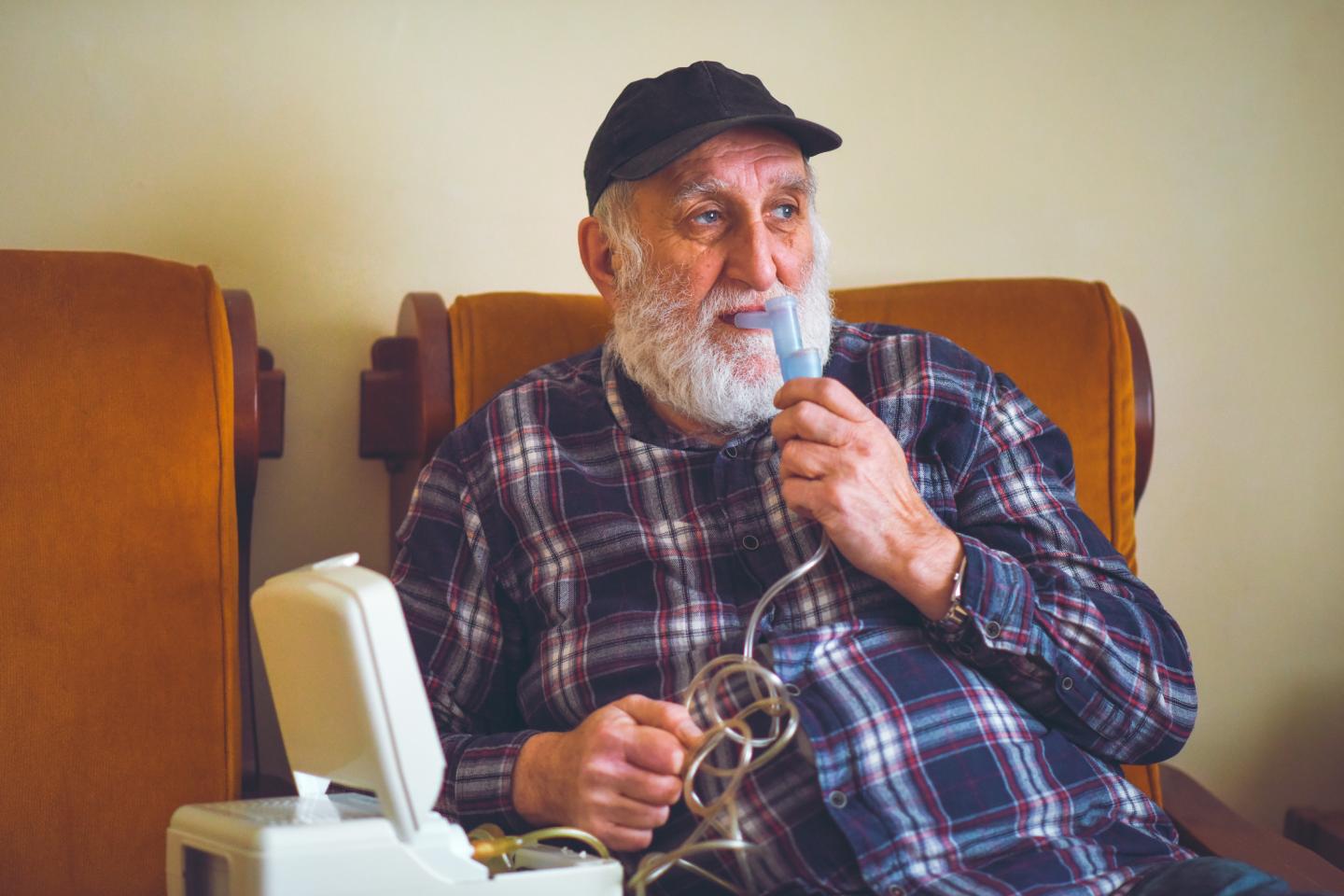
Credit: Intermountain Healthcare
A new laboratory-based method of estimating outcomes for patients with a severe pulmonary disorder that has no cure can help physicians better provide proper care, referrals, and services for patients at the end of life, according to a new study of more than 17,000 patients from Intermountain Healthcare.
The Laboratory-based Intermountain Validated Exacerbation (LIVE) score is a prediction model that predicts all-cause mortality, morbidity, and hospitalization rates for patients with chronic obstructive pulmonary disease (COPD), a chronic, progressive lung disease that gradually makes it hard to breathe. COPD affects roughly 16 million Americans, or just under five percent of the U.S. population. It’s estimated that millions more have the disease, but are undiagnosed.
The LIVE score combines a patient’s simple laboratory values (levels of hemoglobin, albumin, creatinine, chloride, and potassium) to identify patients who are at high risk of death or further disease advancement, and who may most need referrals to palliative care and advanced care planning resources.
In the study, Intermountain Healthcare researchers calculated the LIVE scores of 17,124 patients with COPD from the Kaiser Health System Northwest Region. They found that patients with high-risk LIVE scores had the highest one-year mortality rates (39.4%) and the highest rate of palliative care referrals (41.7%). In comparison, patients with the lowest risk LIVE scores had 0.7% all cause one-year mortality and 0.7% palliative care referral rate.
“We found the LIVE score helps personalize therapy to patients beyond the COPD diagnosis alone and provides additional risk information to both patients and their doctors. From a population health perspective, the LIVE score allows for designing pathways of care that identify and treat patients based on individual risk beyond a single diagnosis label alone,” said Denitza Blagev, MD, the study’s lead author, and a pulmonary and critical care physician at Intermountain Medical Center, who serves as medical director for Quality, Specialty Based Care at Intermountain Healthcare in Salt Lake City.
Results from the study will be presented at the annual international conference of the American Thoracic Society, in Dallas on May 19.
Unlike other COPD risk scores, the LIVE score is entirely based on blood tests and assesses rates of other diseases in COPD patients rather than lung function specifically. While diseases such as heart disease and kidney disease contribute to the risk of death, hospitalization, and symptoms in patients with COPD, there has been no systematic way of incorporating these diseases in determining overall risk for patients with COPD, until now.
Researchers say the findings can help physicians determine which of their COPD patients are at highest risk, and who may benefit from palliative care and appropriate end-of-life services. Palliative care focuses on relief from the symptoms of a serious disease, rather than on a cure, and is often provided in the final stages of a patient’s life.
While patients with COPD in general are considered high risk, there is a lot of variability in the risk of death for a particular patient with a COPD diagnosis. By using the LIVE score clinicians can design health system interventions that assess high-risk patients for palliative care evaluation.
“By exploring the association of palliative care referrals and LIVE score risk, this study is a step forward in understanding how the LIVE score may be used to target appropriate patient care,” said Dr. Blagev.
“Our findings lend more insight into how we can use these laboratory-based scores at the bedside to ensure that patients are receiving the most appropriate care,” she said. “This doesn’t mean everyone with high risk needs to be referred to palliative care, but it shows potential opportunities to improve care for patients in that highest risk group,” said Dr. Blagev.
For example, for a COPD patient with a low-risk LIVE score, interventions aimed at optimizing COPD management may be most effective, as the risk of other diseases and death is relatively low. In contrast, a patient with a high-risk LIVE score may see benefit from COPD-directed therapy, but may find even more improvement with management of their other diseases, which contribute to the risk of death.
Researchers note that the LIVE score model has already been validated in more than 100,000 COPD patients at several diverse health systems, so these new study findings further demonstrate the effectiveness of using the model to enhance care and planning for patients.
###
Media Contact
Jess C. Gomez
[email protected]




